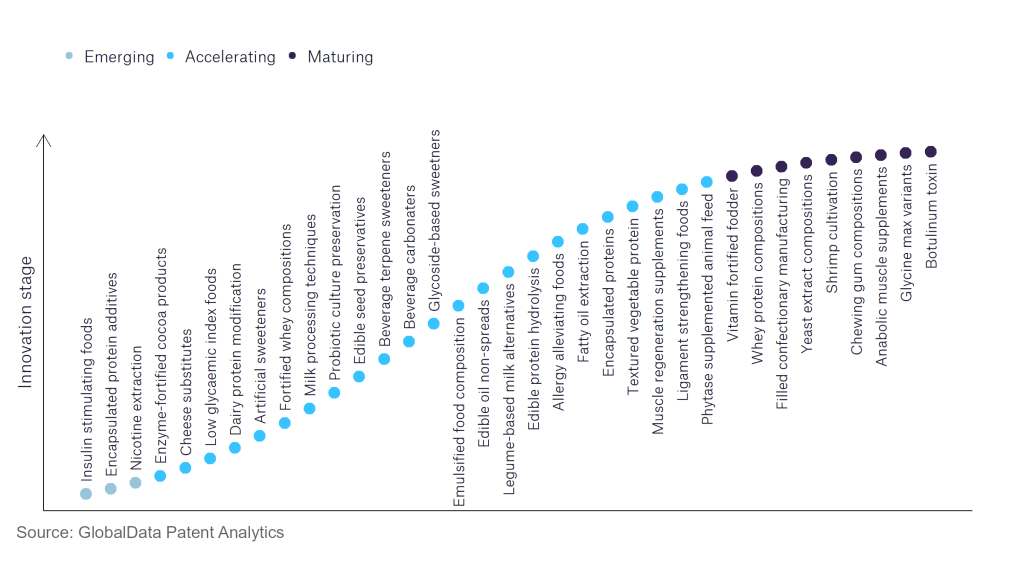
The consumer industry continues to be a hotbed of innovation, with activity driven by environmental sustainability, health and wellness, convenience, and aesthetics, and the growing importance of technologies such as 3D food printer, digital food management, food safety and transparency, and personalised nutrition. In the last three years alone, there have been over 450,000 patents filed and granted in the consumer industry, according to GlobalData’s report on Innovation in Consumer: Vitamin fortified fodder.
However, not all innovations are equal and nor do they follow a constant upward trend. Instead, their evolution takes the form of an S-shaped curve that reflects their typical lifecycle from early emergence to accelerating adoption, before finally stabilising and reaching maturity.
Identifying where a particular innovation is on this journey, especially those that are in the emerging and accelerating stages, is essential for understanding their current level of adoption and the likely future trajectory and impact they will have.
40+ innovations will shape the consumer industry
According to GlobalData’s Technology Foresights, which plots the S-curve for the consumer industry using innovation intensity models built on over 110,000 patents, there are 40+ innovation areas that will shape the future of the industry.
Within the emerging innovation stage, hydrogel dressings, dextrin-based compositions, and safety injection needles are disruptive technologies that are in the early stages of application and should be tracked closely. Wet wipes dispenser, carbon fibre sports equipment, and cigarette rod making device are some of the accelerating innovation areas, where adoption has been steadily increasing. Among maturing innovation areas are portable toothbrush cases and anabolic muscle supplements, which are now well established in the industry.
Innovation S-curve for the consumer industry

Vitamin fortified fodder is a key innovation area in consumer
Vitamin fortified fodder refers to fodder fortified with vitamins that provide health benefits to livestock.
GlobalData’s analysis also uncovers the companies at the forefront of each innovation area and assesses the potential reach and impact of their patenting activity across different applications and geographies. According to GlobalData, there are 50+ companies, spanning technology vendors, established consumer companies, and up-and-coming start-ups engaged in the development and application of vitamin fortified fodder.
Key players in vitamin fortified fodder – a disruptive innovation in the consumer industry
‘Application diversity’ measures the number of different applications identified for each relevant patent and broadly splits companies into either ‘niche’ or ‘diversified’ innovators.
‘Geographic reach’ refers to the number of different countries each relevant patent is registered in and reflects the breadth of geographic application intended, ranging from ‘global’ to ‘local’.
Nestle is one of the leading patent filers in the vitamin fortified fodder space. Some other key patent filers include Royal DSM, Colgate-Palmolive, and Tianjin Chenhui Feed.
In terms of application diversity, L’Institut National Recherche Agronomique leads the pack, while Micronutrients USA and Warburton Technology stood in the second and third positions, respectively. By means of geographic reach, Kalmarna held the top position, followed by L’Institut National Recherche Agronomique and Warburton Technology.
With consumers increasingly seeking healthy food options for their livestock, in order to prolong their life and reduce the risk of infection, the demand for vitamin fortified fodder will increase in the coming years.
To further understand the key themes and technologies disrupting the consumer industry, access GlobalData’s latest thematic research report on Consumer.
